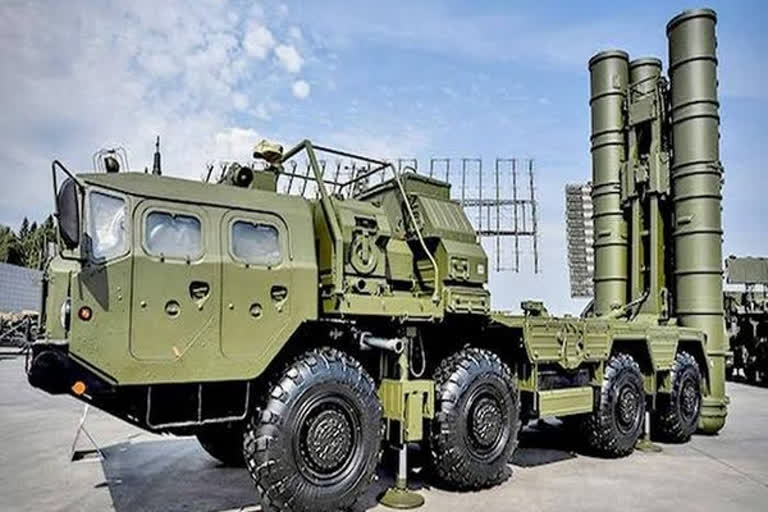New Delhi: Announcing that the President Joe Biden-initiated US’ Global Posture Review (GPR) was complete, the Pentagon made it official on Monday that China was indeed its prime bête noire and the priority region for the GPR was the Indo Pacific.
But during the course of the interaction, never was India—supposedly on the frontlines in the Indo-Pacific region in the US-led effort to contain and counter China—or the ‘Quad’—mentioned even once.
Unequivocally stating that ‘China as our (US’) pacing challenge’ and ‘the priority region for the GPR was the Indo Pacific’, Mara Karlin, acting Deputy Under Secretary of Defence for Policy, said, “The department conducted GPR consultations with our NATO allies Australia, Japan, the Republic of Korea, and over a dozen partners across the Middle East and Africa.”
The ‘Quad’ of the ‘Quadrilateral Security Dialogue’ is understood to be a grouping based on an anti-China platform. It comprises India, US, Australia and Japan.
Led by Lloyd Austin, US secretary of defence, the GPR effort—a detailed assessment of US’ overseas forces and footprint so as to align with the US national strategy and objectives—was initiated by President Biden on February 4, 2021.
Besides the defence department, all the key US departments dealing with defence and security—National Security Council, State Department, US Agency for International Development, and the Office of the Director of National Intelligence—are involved in the formulation of the GPR.
The development acquires significance in the backdrop of the impending visit of Russian President Vladimir Putin who is scheduled to meet Indian Prime Minister Narendra Modi on Monday (December 6).
This summit will take place even as a 2 plus 2 meeting between the Indian and Russian defence and foreign ministers is on. Another simultaneous meeting involving a joint commission will look at the trade and commerce aspect of the India-Russian relationship.
These meetings are expected to see some major defence deals between India and Russia where the military-technical cooperation for the next decade 2021-2031 will be announced.
With the supply of the Russian S-400 missile and air defence system having begun to India, there is speculation that the two countries may even talk on the S-500 system which is supposed to be the world’s most advanced and powerful air defence system at the moment.
Just last month, Dmitry Shugayev, director of Russia’s Federal Service for Military-Technical Cooperation, indicated, “We consider India, as well as China and all the states that we have long-standing, partner and predictable relations with as prospective buyers of this (S-500) latest system.”
While the first S-500 system—also known as the ‘Prometey’ or ‘Triumfator-M’—is expected to be delivered to the Russian military this year itself, the first exports may well take place by 2030.
On August 24, 2021, Alexander Mikheev, the head of Russia’s state arms exporter Rosoboronexport, was quoted by Russian media to have said that the plan was to introduce the S-500 in the global market by 2030.
India and the US are already at loggerheads over the supply of the S-400 system.
The US has threatened to impose sanctions on India under the Countering America’s Adversaries Through Sanctions Act (CAATSA) for buying the S-400 air defence system from Russia. The US has not relaxed the CAATSA stipulations for key NATO ally Turkey which has gone ahead with its buying of the S-400 ‘Triumf’ air defence systems. At the core, CAATSA is tailor-made to prevent Russia from earning money through defence deals.
The India-US bilateral relationship may have also taken a slide due to India’s apparent refusal to provide a base for US aircraft for ‘over the horizon’ strikes in Afghanistan to hit Islamic State and its affiliated terrorist groups during the US’ chaotic withdrawal from Afghanistan.
The prioritisation of the ‘Quad’ is believed to have considerably watered down due to India’s reluctance to be pitted frontally against the Chinese as it was largely seen as a naval effort whereas the border issue with the Chinese along the LAC was a land issue.
Questions over the ‘Quad’ also rose after China resolved its ‘Malacca Dilemma’ to a considerable extent by carving out alternate routes to the Indian Ocean bypassing the narrow straits of Malacca.
These developments beg a question whether India’s importance in the overall US scheme and strategy to counter China has taken a backseat.
Also Read: US to decide on potential CAATSA waiver to India on S-400 Russian missiles deal



